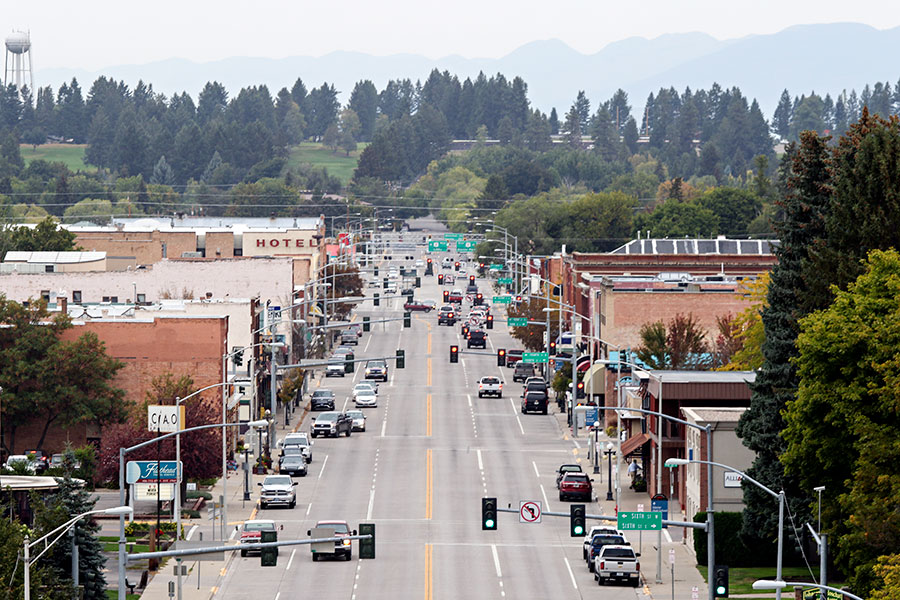Development in Kalispell has gathered momentum in recent years, as many businesses and organizations anticipate the arrival of a new walking path cutting through downtown, replacing the existing train tracks.
Since that ball got rolling, officials said, it has only picked up speed. Earlier this month, at the Kalispell Chamber of Commerce’s luncheon, it became clear how many incentives businesses and investors have to put their roots down in Kalispell’s downtown.
The train tracks are scheduled to come out next year, and there is already buzz around the businesses and other opportunities that could benefit from the new walking path.
“It’s an opportune time to be investing in Kalispell,” said Kim Morisaki, business development and marketing director at Montana West Economic Development.
For starters, Kalispell has five tax-increment financing (TIF) districts spread across several areas: downtown, Old School Station, South Kalispell Airport, Glacier Rail Park, and the city’s west side.
The TIF dollars fund the implementation of Kalispell’s Downtown Plan, and are used within the district to finance all sorts of improvement needs, from infrastructure and parking to decorative street lighting and city-made low-interest loans and grants.
Along with the TIF districts, also called Urban Renewal Areas, Kalispell is the temporary home of an Opportunity Zone. Opportunity Zones are relatively new, created by the Tax Cuts and Jobs Act of 2017, and designate an area in a community for new investments that are eligible for tax incentives. There are 25 such zones across Montana.
Opportunity Zone funds invest in businesses qualified for these zones.
In Kalispell, the Opportunity Zone is a rough horseshoe shape ringing downtown and coinciding with other TIF districts. Morisaki said the benefits of each program still apply in overlapping areas. The Opportunity Zone means capital gains taxes are deferred until 2026, and current capital gain is reduced by 10 to 15 percent. There are also no capital gain taxes on the increased value of the property if held for 10 years.
One of the requirements for property in an Opportunity Zone is that its initial investment must be doubled within 30 months.
“That’s a rule, and it makes it easy to do if you’re buying an empty piece of ground and then investing in a building on top of it,” Morisaki said. “But really if people bought up old buildings and did something amazing to them then that would work too.”
To get the full benefit of the Opportunity Zone, investors should have capital gains in their funds by the end of 2019, Morisaki said.
According to Bryson Pelc, a CPA and partner at Jordahl Sliter, the final regulations on Opportunity Zones haven’t yet been issued, and with the requirement to double the investment, the projects need to be “shovel ready.”
“To get the most benefit you want to get in earlier than later,” Pelc said.
“There are some set dates in it that the longer you wait, it negates some of the benefits you get.”
There are also New Market Tax Credits to consider, which Morisaki said works best for projects worth $4 million and more “to make it worthwhile.” The tax credits create 20 percent cash equity in a project.
Kalispell Chamber President Joe Unterreiner said the chamber’s phones have been ringing off the hook since the presentation on the programs.
“These are some pretty good incentives,” Unterreiner said. “There’s a lot of interest out there for sure.”
For questions about the incentives, call Kim Morisaki at (406) 259-7711 or call the Kalispell Chamber of Commerce at (406) 758-2800.
